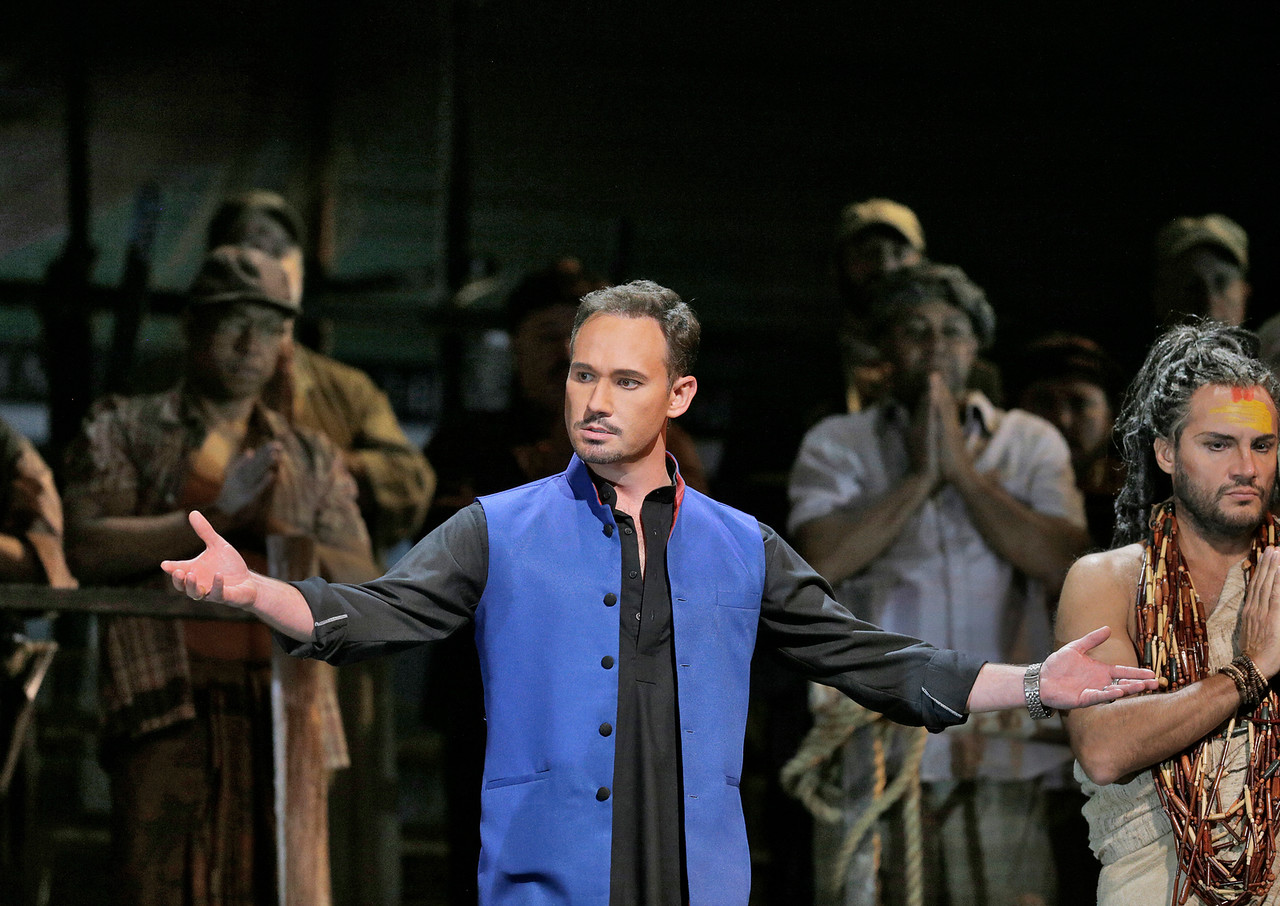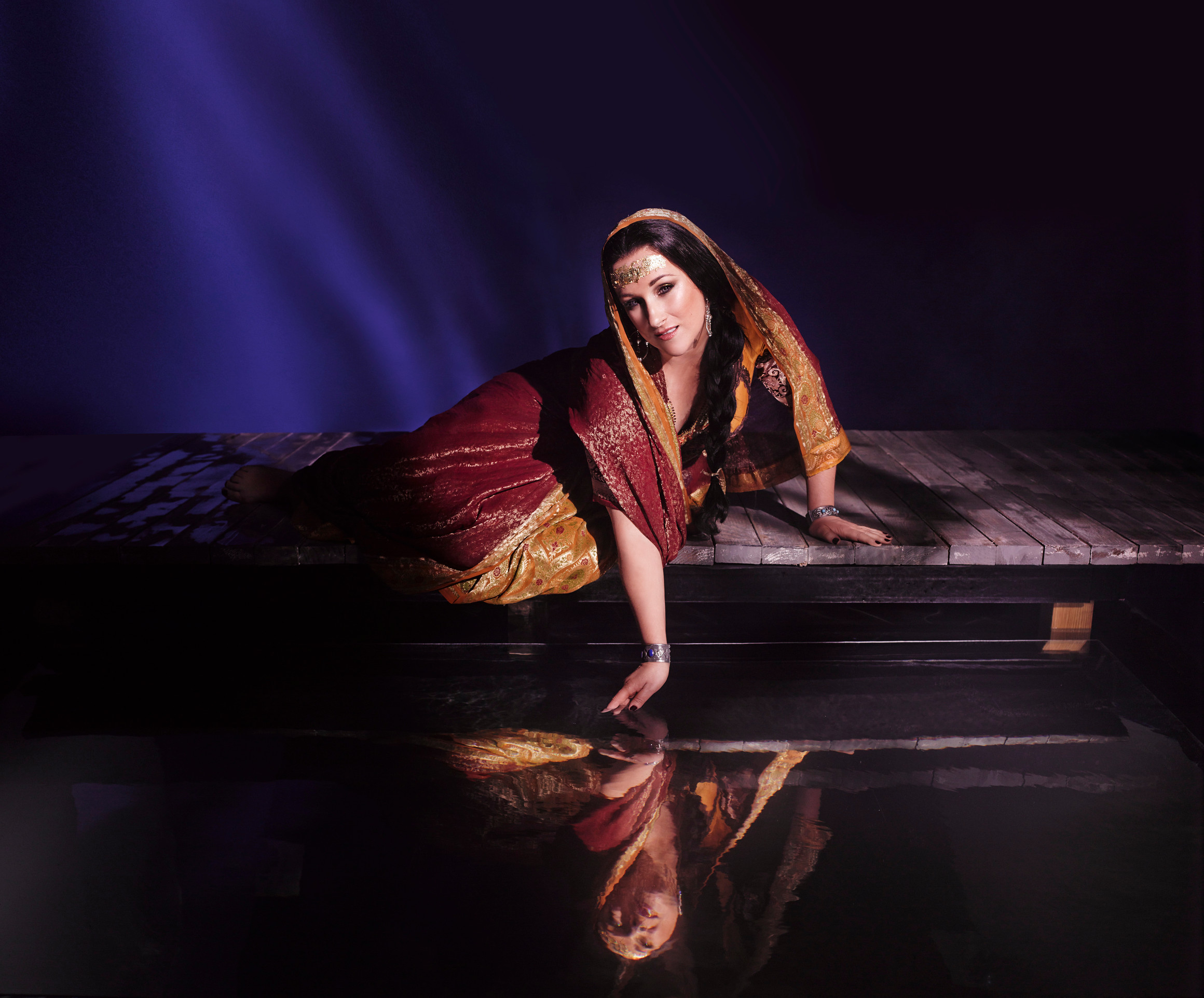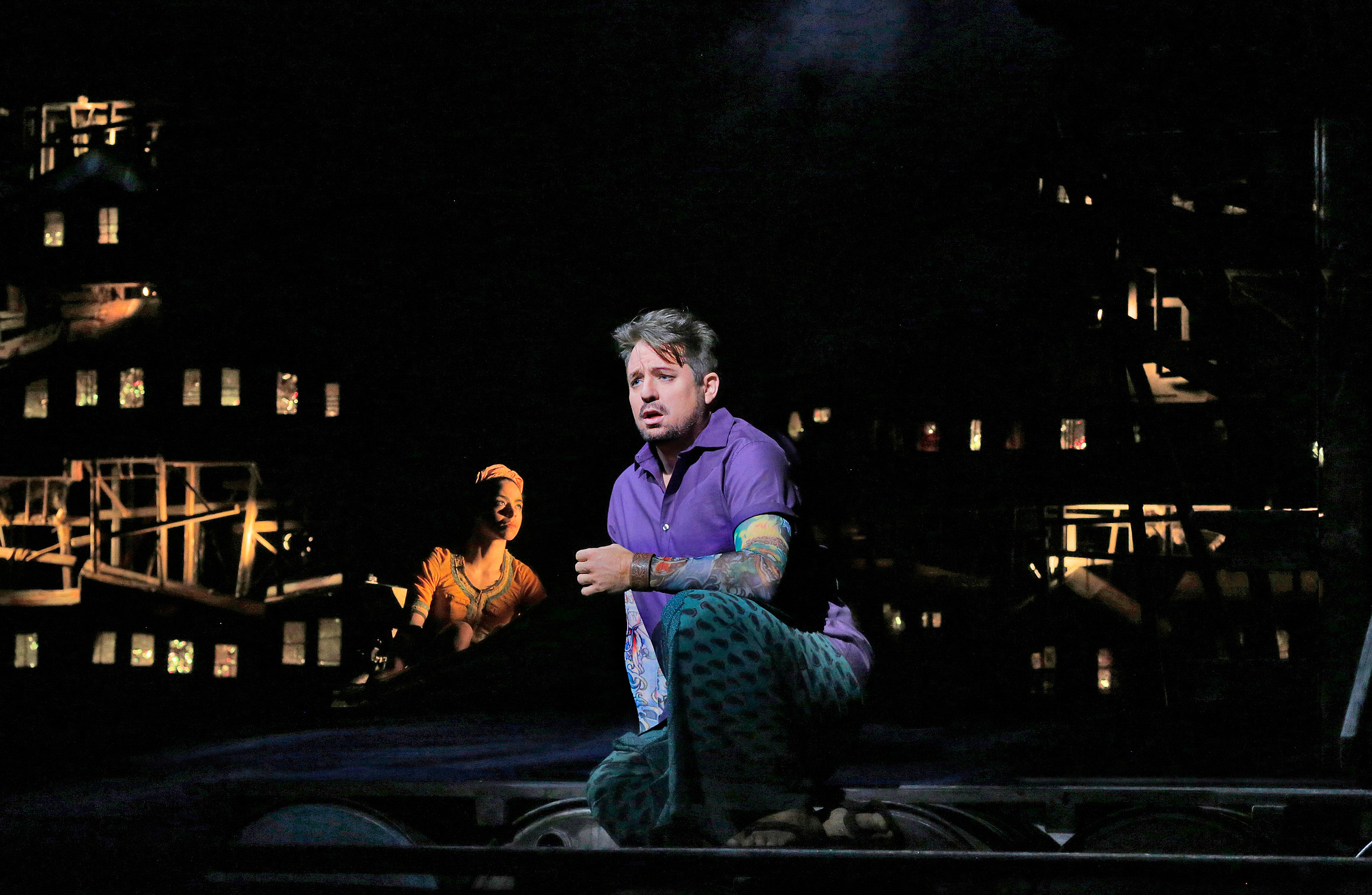Georges Bizet studio photograph circa 1800; https://en.wikipedia.org/wiki/Georges_Bizet.
I find myself in the position of recommending a video recording of an opera. The Pearl Fishers, recorded from last year’s (Jan 16, 2016) Met Opera staged production at Lincoln Center deserves some attention; it is also known in French as Les Pecheurs de Perles. I taped it from a May 22 broadcast on a PBS station and just recently watched it on a big screen TV. It is relatively short at 2 hrs 15 min and is now available in HD on Met Opera On Demand, which I discuss in more detail below. The production garnered a good deal of praise at the time (NYTimes review and Washington Post review). It will not be repeated this year and is well worth watching, even at home on video.
The Pearl Fishers 2016. Photo by Ken Howard; courtesy of the Metropolitan Opera.
The Met version serves as an example of the impact that staging and singer selection can have on the success of an opera. The special effects in the opening sequence were spectacular, realistically portraying pearl divers underwater; the village docks on the rocky shore and the switch to the blighted apartment complex were also effective. Kudos to director Penny Woolcock, the Met technology folks, and the creative staff. The opera has been considered historically as a somewhat flawed opera with an uneven score, a mix of great and lesser moments, and a libretto described by one critic as “clunky” (hey, Bizet composed it when he was only 24 and the libretto is by Eugene Cormon and Michael Carre). However, it contains one of the most famous and thrilling arias of all time, “Au fond du temple saint.” Normally, I would insert a Youtube video recording of the aria at this point (you can do it yourself), but I really want to encourage you to watch the Met video version first. More on that soon. I think the staging by the Met was near perfect, at least it worked perfectly in supporting the mood and placement of the story.
Photos above: Mariusz Kwiecien as Zurga, Diana Damrau as Leila, and Matthew Polenzani as Nadir. Photos of Kwiecien and Polenzani by Ken Howard and photo of Damrau by Kristian Schuller; all photos courtesy of Metropoitan Opera.
Three outstanding singers were selected for the main roles, two friends and the woman they love. Mariusz Kwiecien fit the role of Zurga, leader of the village, quite believably as well as bringing a rich baritone voice to the role. I expected soprano Diana Damrau playing Leila, the Brahmin priestess loved by the two male leads, to be great. My big surprise was Matthew Polenzani, whom I have seen a couple of times previously in lighter roles. In The Pearl Fishers, he remarkably and effectively played the role of Nadir, a determined adventurer; his look and acting were excellent. I wonder if this represents a growth spurt for him and want to see him in future roles. Ms. Damrau sang wonderfully as I anticipated, but her acting was not always on point and this was emphasized by the close ups you get with video. Indeed, often the video director chose to go with close ups when I think views of the full stage would have worked better to place the difficulty of their love affair in the context of its conflict with their social responsibilities. The score uses the simple duet (Triangle) theme effectively throughout the opera in recalling the love of the main characters for each other. There were several beautiful arias, and the scene in the second act with Leila, herself a capture, pleading even fighting with Zurga to save Nadir really drew me into the drama. The Pearl Fishers does have a few major implausibilities (this is opera), and I might have chosen a slightly different ending, but the story was effective nonetheless. For me, it had the feel of watching an old movie because nothing else was on and finding that it was surprisingly good.
I had heard and enjoyed its most famous aria, the baritone-tenor duet several times over the years, but I did not know the story or the words of the aria. Watching the video, I believe that, while it is a great melody, the music in this aria does not really fit the words or the story. Let me explain. Reading in one of my son’s college music theory texts, I found a selection from “Man The Musician” by musicologist Victor Zuckerkandl which stated that the role of music is to “help us to share actively in what is being said.” You derive your own emotion. The music accompanying singing provides you entry to the experience outside yourself. What we learn prior to the ‘au fond’ aria is that two friends became rivals because they fell in love with the same woman that neither was able to obtain. They reaffirm their strong love for each other and claim that they have gotten over their passion for the woman. Yet, their true feelings for Leila arise again and they struggle against them. The duet proceeds in this context. When I hear the music I am experiencing their comradeship, but I am feeling inspirational passion, not the passion of brotherly or romantic love, but a commitment to each other through a common cause. It is as though they are singing together their love for their homeland. There is the possibility that I have been influenced by having seen the musical Les Miserables first, because I feel like maybe the French flag should have been the center of the scene with cries of liberty, equality, and fraternity in the background. Don’t get me wrong. I love the aria and Kwiecien and Polenzani provide a beautiful rendition, but for me, Bizet got it wrong. Ok, I know your arrows are already pulled out, so shoot. But, maybe that is why the duet has become more popular beyond the opera itself; the words would limit its popularity.
All things together, the opera worked for me. It’s short, not longer than the average movie these days; it has an exotic locale, the drama of a passionate love triangle, and some great arias. And I admit to tears in my eyes at the end. I am surprised that this opera is not done more often.
Ok, a word about viewing The Pearl Fishers on Met Opera On Demand. The website gives details about which devices you can use to view the video and audio recordings. Samsung smart TVs can play them using an app and you can stream them using other services to capable TVs. You can subscribe for $15 per month or annually for $149. However, you can also view them individually for $4 for SD recordings or $5 for HD recordings; the operas when purchased individually are streamed to you directly over the internet. You have up to six months to start the videos and 24 hours to finish them once started. Signing up is relatively painless, but you can spend some time finding exactly what you want on the website. A free seven day trial is offered, but when I tried that a few years ago it only allowed you to view sections of operas, not the whole operas. This may have changed but I can't tell since it won't let me sign up a second time for the free trial. I am hoping Met Opera will choose to broadcast The Pearl Fishers again in the coming year as part of their HD in Cinema Encore series.





